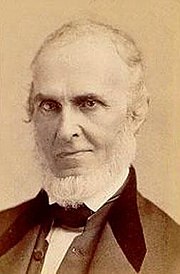John Greenleaf Whittier's Human Design Chart
2/5 Sacral Manifesting GeneratorAmerican writer of poetry, hymns and novels who was called “the Quaker Poet,” as his life and poetry were closely connected with his faith of his upbringing. Although he had very little early education, he discovered poetry at the age of 14 and was first published at 18 to become one of the best known American poets.
His first published works came to the attention of William Lloyd Garrison, who became his lifelong friend. Through him, Whittier became the editor of a Boston paper, 1829, which started his active involvement in the abolitionist movement, eventually devoting all of his energies to the cause. He became a member of the MA. Legislature 1834-1835, founded the Liberal Party in 1839, was a factor in the founding of the Democratic Party, served as editor of the “Pennsylvania Freeman,” 1838-1840 and the Washington “National Era,” 1847-1860. After the Civil War, his work “Snowbound”, 1866, is generally considered to be his best work and made him famous. Whittier is also remembered for numerous ballads and has written over a hundred hymns.
He died on 9/07/1892, Hampton Falls, NH.
Link to Wikipedia biography
Discover More Famous People
Browse and analyze over 55,000 public figures and celebrities.
Ra Uru Hu
5/1 Manifestor
Martha Stewart
4/6 Manifestor
David Lynch
4/6 Generator
Barack Obama
6/2 Projector
Steve Jobs
6/3 Generator
Vladimir Putin
5/1 Manifestor
Kim Kardashian
3/5 Generator
Michael Jackson
1/3 Projector
Marilyn Monroe
6/2 Projector
Ariana Grande
2/4 Projector
Oprah Winfrey
2/4 Generator
Johnny Depp
2/4 ManifestorWhat is HumanDesign.ai and how does it work?
Curious what makes John Greenleaf Whittier tick? HumanDesign.ai instantly maps their exact birth data into a fully interactive clickable bodygraph chart, letting you hover or tap every center, channel, and gate for plain-language explanations. Bella, the platform’s built-in AI guide, adds context in real time, translating complex mechanics into everyday insights so you can see how John Greenleaf Whittier’s strengths, challenges, and life themes play out on-screen.
The same tools are waiting for you. Generate your own Human Design Chart in seconds, open a library of 2000+ suggested questions, and chat with Bella as often as you like to decode your design, daily transits, and even relationship dynamics.
Want to compare energies? Save unlimited charts for friends, family, or clients, then ask Bella to reveal compatibilities, composite patterns, or coaching tips, all in one conversation thread.
Start free with core features, or unlock our Personal and Pro plans for deeper dives: unlimited Q&A, celebrity chart search spanning 55,000+ public figures, white-label PDF reports, branded content generation, and a professional profile with built-in booking for practitioners. Whether you’re exploring your own potential or guiding others, HumanDesign.ai delivers an ever-expanding toolbox of AI-powered insights—no spreadsheets, no jargon, just clarity at your fingertips.
Ready to see yours? Signup for FREE today!

